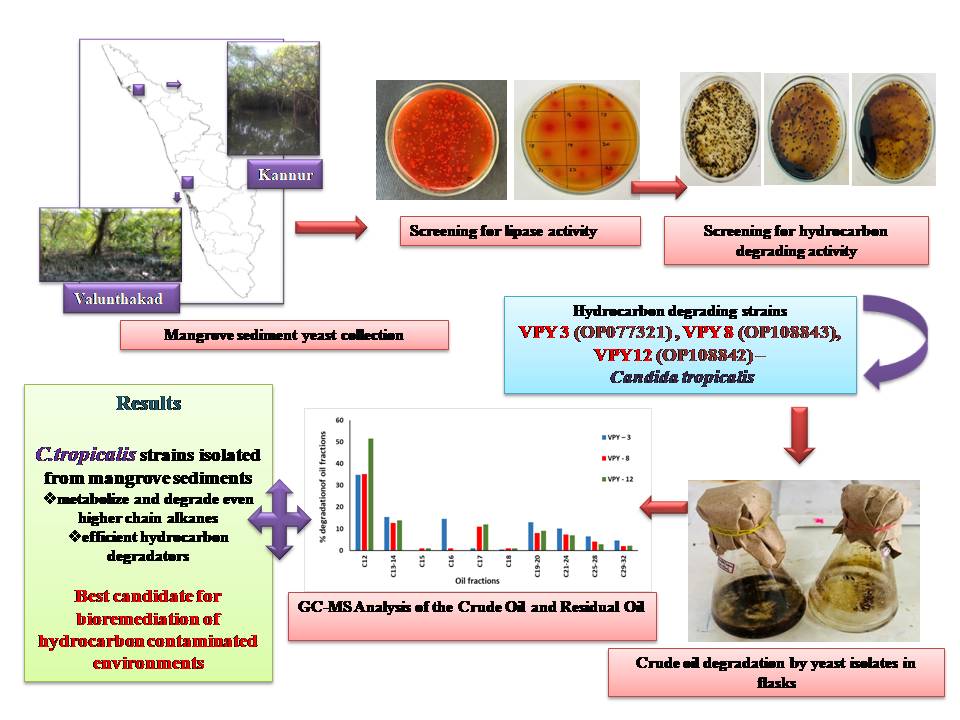Screening, Isolation and Hydrocarbon Degradation Characteristics of Yeasts from Mangrove Sediments of Kerala
Main Article Content
Abstract
The aim of the present work was to examine the hydrocarbon degradation potential of yeasts isolated from the mangrove sediments. Mangrove sediments around the world were considered to be heavily polluted with oil contaminants and the microbes dwelling in them were believed to be highly active in metabolizing and detoxifying the oil fractions. In the present study, 70 yeast isolates were screened for their lipolytic activity qualitatively and 35 of them which showed comparatively higher lipolysis were tested for their crude oil degradation ability. Screening of hydro-carbon utilizing isolates was performed on Bushnell Haas agar media overlaid with 1% crude oil and the appearance of colonies were considered a positive. Three isolates were selected based on this and were sequenced using ITS gene of the 18S region of the rDNA and identified to be Candida tropicalis. The extent of crude oil degradation was assessed by growing the isolates in basal medium supplemented with heavy crude oil as the carbon source for 21 days. The residual crude oil fractions were then analyzed using GC-MS to quantitatively measure the degradation potential of each isolate. Our results showed that the yeast strains under study could actively metabolize the crude oil including the higher chain fractions which make them efficient hydrocarbon degraders that can be used in the bioremediation processes.
Article Details

This work is licensed under a Creative Commons Attribution-NonCommercial 4.0 International License.
Published articles are under the copyright of the Applied Environmental Research effective when the article is accepted for publication thus granting Applied Environmental Research all rights for the work so that both parties may be protected from the consequences of unauthorized use. Partially or totally publication of an article elsewhere is possible only after the consent from the editors.

